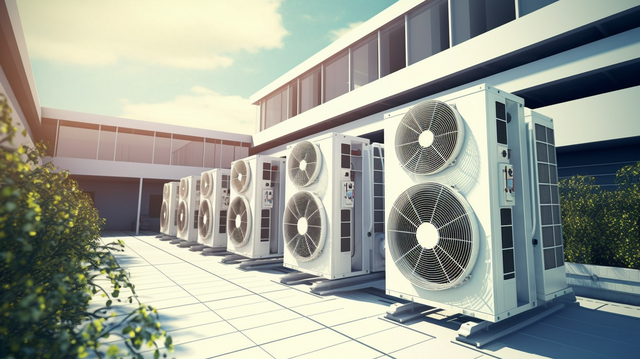
Centrifugal Chiller — High-Efficiency Cooling for Large-Scale Applications
The centrifugal chiller is one of the most advanced and widely used types of vapor-compression chillers, commonly applied in large HVAC projects and various industrial processes.
This chiller utilizes a centrifugal (dynamic) compressor to compress the refrigerant. The compressor operates by increasing the refrigerant’s velocity and then converting it into high pressure through a diffuser, resulting in higher efficiency and lower energy consumption at large capacities.
Centrifugal chillers are typically designed for high-capacity applications (usually above 300 tons of refrigeration) and, due to their larger size and specialized components, are primarily used in major facilities such as hospitals, airports, large commercial centers, data centers, and power plants.
Main Advantages of Centrifugal Chillers
- High Efficiency:
Thanks to their unique compressor design, centrifugal chillers maintain excellent performance both at full load and partial load conditions. - Low Power Consumption:
Due to their continuous and smooth operation, and the absence of reciprocating parts, these chillers consume less electrical power compared to screw or reciprocating chillers. - Long Service Life and Easy Maintenance:
With fewer moving parts, mechanical wear is minimized, resulting in lower maintenance costs and extended operational lifespan. - Low Noise Level:
The aerodynamic design of the compressor and the absence of mechanical impacts lead to extremely quiet operation.
Operating Principle
A centrifugal chiller consists of four main components:
centrifugal compressor, condenser, expansion valve, and evaporator.
During the cooling cycle, the refrigerant is first compressed in the compressor and then flows to the condenser, where it releases heat. After passing through the expansion valve, it enters the evaporator and absorbs heat from the chilled water, thereby reducing its temperature.
Design and Control Considerations
Centrifugal chillers are highly sensitive to variations in pressure and temperature, which makes accurate design and selection essential.
In some advanced models, Variable Frequency Drive (VFD) technology is employed to adjust compressor speed according to the cooling load, further reducing energy consumption at partial loads.




